Keep Waiting Periods From Passing a Round Number
1:58 PM feels sooner than 2:01 PM
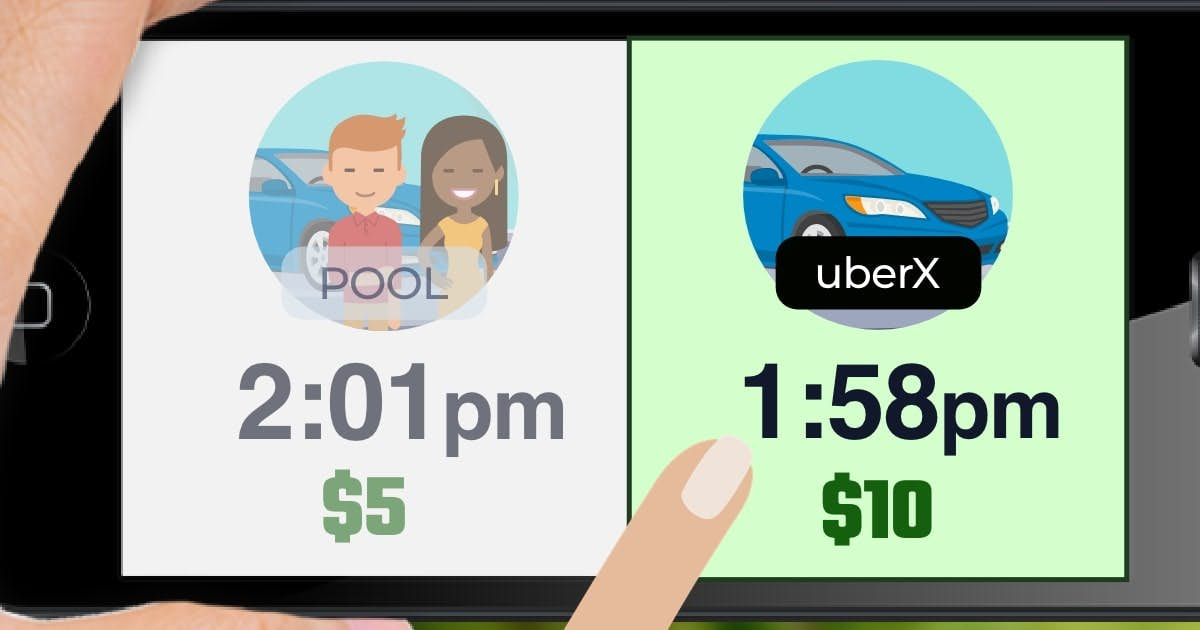
Overview
Researchers analyzed 1.8 million Uber rides, and they found that customers prefer UberX (the more expensive solo ride) if it arrives within the same hour (e.g., 1:58pm).
Crossing a time bracket (e.g., 2:01pm) feels longer, even if the difference is trivial (Donnelly, Compiani, & Evers, 2022).
This effect resembles “charm pricing” in which $4.99 feels cheaper than $5.00. Your brain overemphasizes the unit difference.
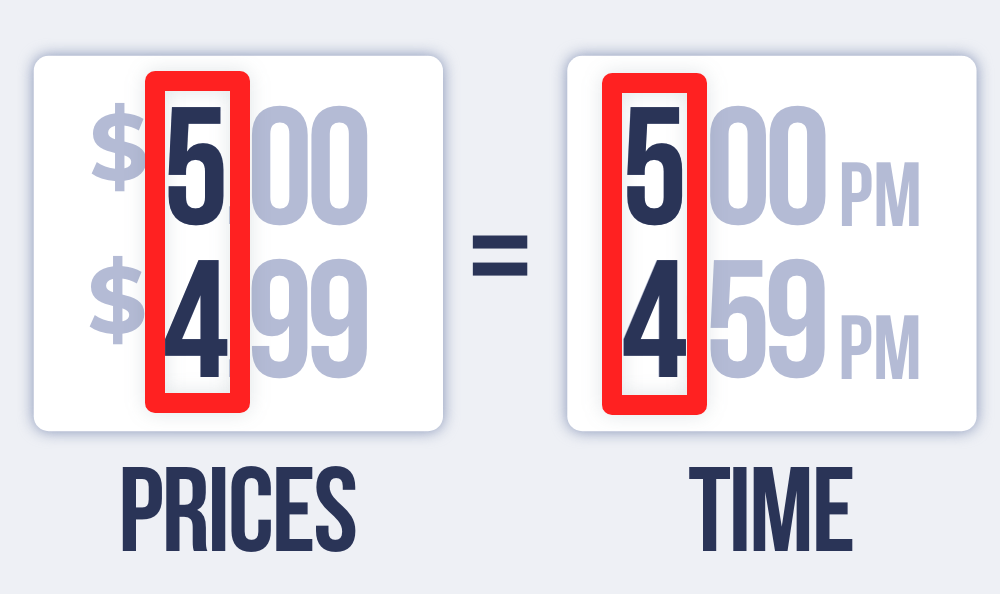
Much like a one-cent difference, a one-minute difference can be deceptively powerful.
In additional studies, those researchers confirmed that events seem longer when they span more time boundaries:
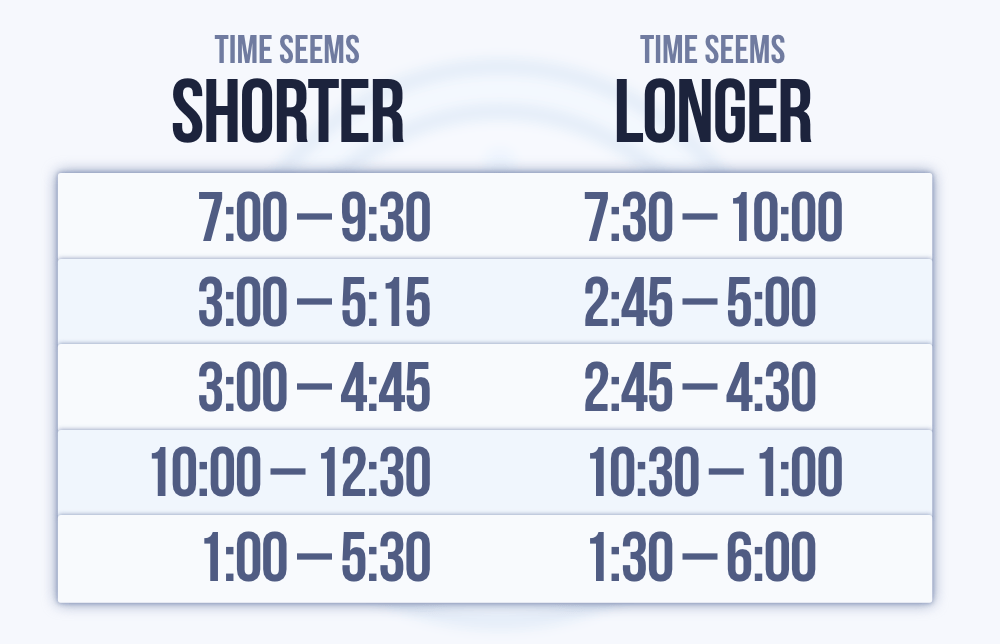
Some actionable techniques:
1. Shipping
Suppose that today is August 23. If you buy something online, you might upgrade to expedited shipping so that your product arrives within August.
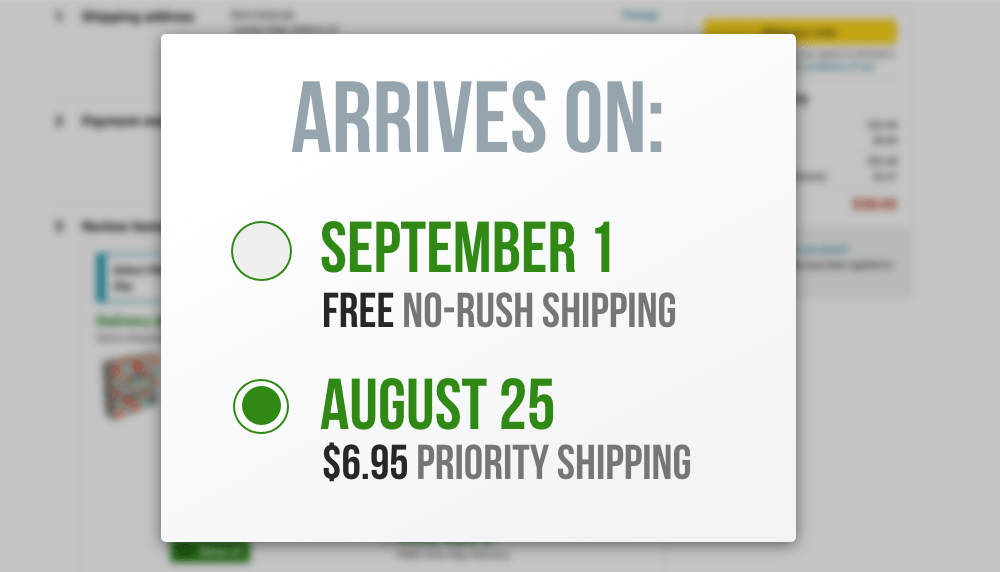
2. Store Hours
Perhaps you should extend store hours from 8:30pm to 9:00pm. This extra 30 minutes will feel like 60 minutes because it reaches a new time bracket.
3. Length of Benefits
Billing cycles align with time periods – for example, access to customer support might end on the final day of a month (e.g., August 31). Why not shift this timeline? Extending this benefit by a single day (e.g., September 1) could drastically raise the perceived value. It feels like an extra month.
4. See Results By
When will customers receive benefits? Frame this value within the current time bracket (e.g., end of the [month, quarter, year]).
Always frame the right category of time:
categories are quite flexible…the description “take off in the morning, be in your hotel before lunch” makes lunch a salient boundary and thus likely minimizes the difference between a 10:58 and 11:02 arrival. (Donnelly, Compiani, & Evers, 2022, p. 837)
5. Meetings
Scheduling a 45-min meeting?
Recipients will prefer 1:00pm to 1:45pm (vs. 1:30pm to 2:15pm).
However, meetings seem more productive when they span more time brackets. Workers in Amazon’s Mechanical Turk estimated they could accomplish more tasks during these seemingly larger time windows.
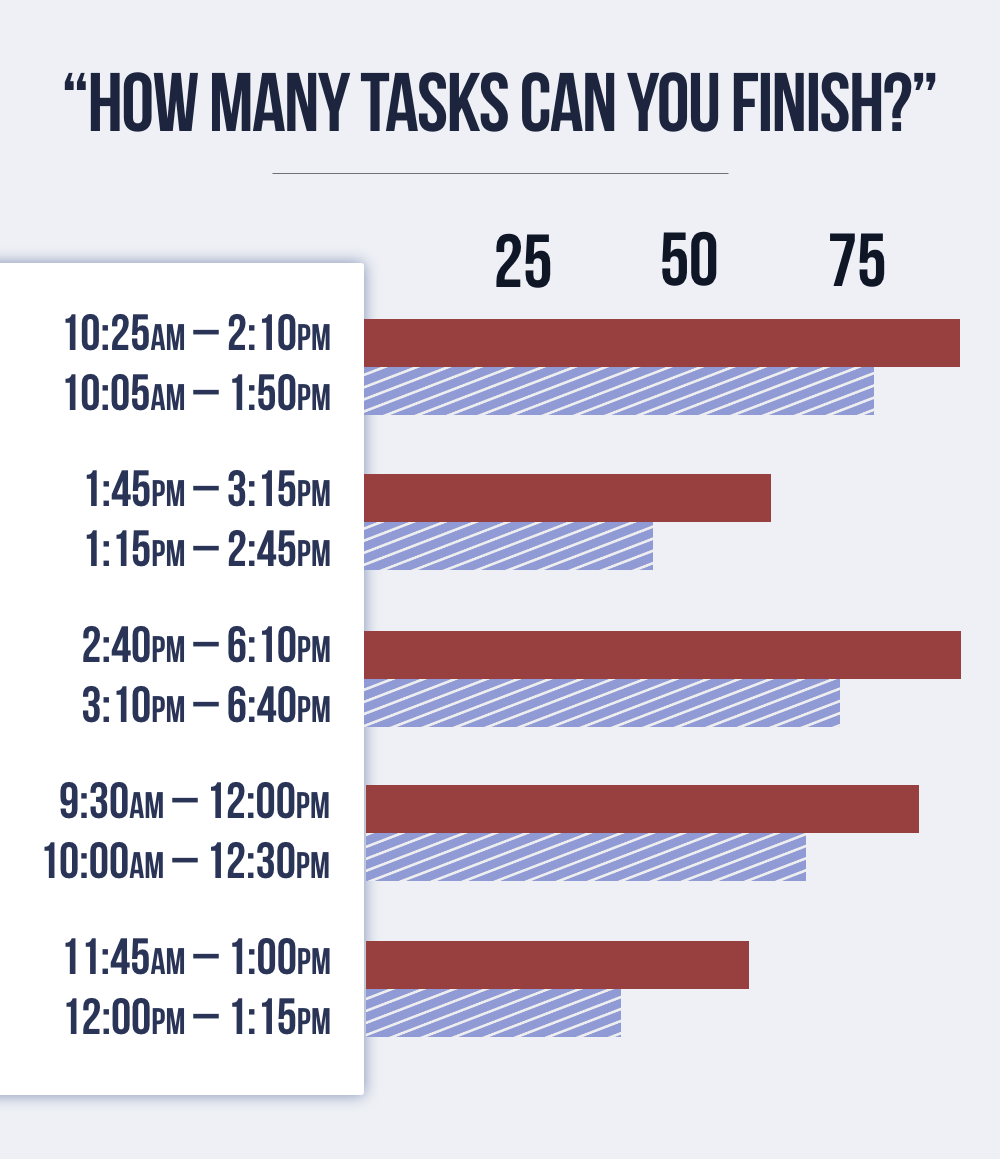
6. Life Decisions
Would a 17-year old be tempted to pursue a 2-year degree that finishes in their teens? Would an 18-year-old be less intimidated by a 4-year degree because both options (2-year vs. 4-year) would end in their twenties?
Summary
Choose the right time brackets for events: Minimize brackets for negative events (e.g., layovers), but maximize them for positive events (e.g., lunch break).
- Donnelly, K., Compiani, G., & Evers, E. R. (2022). Time periods feel longer when they span more category boundaries: Evidence from the lab and the field. Journal of Marketing Research, 59(4), 821-839.
